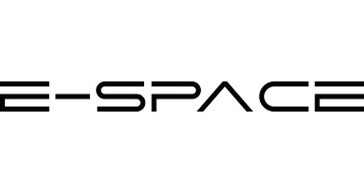
-
StatusOngoing
-
Status date2025-06-11
-
Activity Code7C.088
The objective of this project is to develop a user terminal providing reliable and affordable connectivity solution for both the Connected Vehicles and Critical Infrastructure monitoring and management sectors while being natively designed to be integrated or deployed in their corresponding solutions or facilities. The project aims to address the current limitations of existing solutions by providing ubiquitous low-cost connectivity, which is required by many connected vehicle and energy infrastructure monitoring use-cases.
For both the Connected Vehicles and Critical Infrastructure Monitoring markets, the project establishes user terminal (UT) specifications based on the needs of these markets/end-users as well as industry-specific integration and deployment constraints. The project will leverage E-Space's unique space system plus modem to design an integrated UT based on market/end-user specifications, driven respectively by Continental and Electricité de France (EDF) for automotive and energy critical infrastructure requirements. The project aims at testing the radio frequency (RF) performance of the system, specifically E-Space's ability to communicate with the UT integrated within relevant configurations. Continental and EDF will both be able to help proposing lab and field tests platforms that represents environments and constrains they meet in their respective businesses.
The project aims to de-risk the availability of future space-based system, technology and product offerings by aligning E-Space’s novel development with key industry players within the Automotive and Energy sectors that are Continental and EDF. The successful demonstration of the OTA performance of the UT fit for automotive and energy use-cases is expected to create significant business value for both industries and field-test the core technologies required for commercial operation.
The primary challenge is to overcome potential UT technical barriers related to critical industry requirements: size, weight, power consumption, antenna performance and cost.
Consequently, the system must demonstrate that link budget performance and achievable data throughputs - in controlled automotive and critical infrastructure environments - are adapted to fulfil the requirements of the target use cases. Such demonstrations include:
- Improve connectivity: The product will provide improved coverage and connectivity—with compelling data rates—for connected vehicles and critical infrastructure use cases, using the E-Space satellite technology in areas where cellular connectivity is limited or unavailable.
- Deliver Robust performance: The product will provide robust RF performance in sub-optimal scenarios, demonstrating reliable connectivity in a wide range of unique environments.
- Provide Significant Cost savings: The product will reduce costs associated with specific use cases (e.g., vehicle maintenance, critical infrastructure monitoring) by providing advanced insight and support services that can help identify issues before they become costly problems.
- Increase revenue: The product will generate new revenue opportunities for customers by enabling value-added services, based on unlimited coverage and advanced performance (e.g., latency, data rates, etc.)
- Add layers of security: The product will improve an organisation’s security posture by providing assured, reliable, ‘zero trust’ architecture options.
- Enhanced reliability: The product will help improve reliability by providing a unified and integrated connectivity solution, reducing complexity and increasing efficiency.
- Unlock new markets: The product will open new markets through the combination of UT performance, ease of integration (e.g., size, weight, connectivity, etc.) and competitive cost of operations.
- Compatibility: The product will be compatible with existing industry infrastructure and can be customised to meet specific customer needs.
- Ease of deployment: The product will be easy to deploy, reducing the time and cost associated with implementation.
- High-speed, uninterrupted and low latency global IoT connectivity solution
- Latency below 20ms
- Services ranging from basic messaging IoT up to voice, video and data for specialised applications
The user equipment (UE) Gen.1 architecture scoped in this project is based on two System-on-Chips (SoCs) components and an RF transceiver integrated by E-Space into a single compact modem board.
The UE architecture will be able to host a 5G PHY and Protocol Stack. The modem board will be integrated with an antenna to performed over-the-air (OTA) testing.
The UE architecture has a variety of line of sight (LoS) (e.g., WiFi, BLE, etc.) interconnections with external devices.
|
|
Project Plan |
|
1 |
Generate a complete set of Product Requirements for Automotive and Critical Infrastructure use cases based on user specifications |
|
2 |
Integrate UE prototype into automotive environment |
|
3 |
Integrate UE prototype into critical infrastructure environment |
|
4 |
Demonstrate RF performance supporting identified use-cases |
The EVEREST project was successfully completed. The project, which focused on developing key requirements for integration within automotive and critical infrastructure environments - including product, architecture, and antenna specifications - has led to the development of a User Terminal prototype and the execution of an OTA testing campaign. EVEREST provided valuable insights for E-Space across business strategy, terminal development, antenna design, and testing. As a result, a technology roadmap has been established to guide future developments beyond EVEREST.



